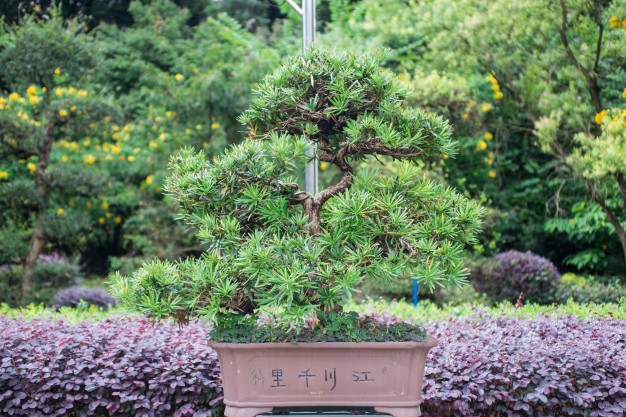Bonsai Plants : Bring the Forest Home
December 2017
Besides being an enjoyable hobby and de-stressing, growing bonsai plants in one’s garden, balcony or window sill, can also make the home vibrant and green
Bonsai plants offer an ideal way for urban residents to enjoy nature’s beauty at home. The word ‘bonsai’ is derived from the Japanese words ‘bon’ (meaning tray) and ‘sai’ (which means growing). So, bonsai literally means growing trees in trays.
“Bonsai is an ancient horticultural art, through which, a replica of nature can be artistically landscaped in a tray, along with other elements like a cascading waterfall, moss, pebbles and a rock garden. Bonsai is the art of dwarfing trees or plants and growing and pruning them in containers,” explains bonsai expert, Urvashi Thacker of Galleria Verdant.
Maintaining a bonsai plant is not very different from maintaining any regular plant.
“Cultivating a bonsai and giving it a good shape, requires learning some techniques. However, once you have a bonsai (or have purchased one from a nursery), maintaining it is comparatively easy. One has to water it regularly, put compost once a month and change the pot once a year,” elaborates Divya Maurya of Bengaluru-based Upvan-The nature boutique of Bonsai.
How to make a Bonsai
Anyone who is interested in gardening and has a little space on a window sill or balcony, can nurture bonsai trees. You will need some basic knowledge about bonsai gardening and some skill and patience. You can opt for training from a professional, or try learning the basics of bonsai gardening, using resources on the internet. You will also need a few basic tools to grow the bonsai plant at home – pots specifically made for bonsai plants, compost and soil. Lastly, you need to get the plant for which the bonsai needs to be made.
Regular maintenance, careful pruning of foliage and roots throughout the year and consistent watering, are needed to keep the plant in shape. If you do not have a green thumb, you can also approach bonsai nurseries for help or call professionals once a month, to prune and fertilise it.
“There is a common misconception that there are special seeds for bonsai plants. Bonsai plants are regular plants, which are programmed to grow as bonsais. If the sunlight is very limited, plants like Ficus, Aralia and Schefflera can be kept,” suggests Maurya. Fruit and flowering plants require a lot of sunlight. One can grow bougainvillea, fig, orange, cherry, pomegranate, chikoo and even lemon plants as bonsais.
“Keep your credit history clean, by settling outstanding loans and bills in a timely fashion. This will help you, when your credit-worthiness is being evaluated. Compare the long-term benefits of having a floating rate loan versus a fixed rate loan and determine what is best for your needs,” advises Adhil Shetty, CEO of BankBazaar.com.
Time taken to create Bonsai plants
It may take several months, to create a beautiful bonsai. Aluminium or copper wires are wrapped around branches for a few months, to give the branches specific shapes. Bonsai plants are classified according to their shape – formal, informal upright, slanting, cascade, and semi-cascade, double trunk and literati. “Regular trimming and pruning of roots, branches and leaves, is essential to maintain the desired shape. Knowing which branch should be cut and which one should be retained, comes with experience,” says Maurya.
“Prices depend on many factors. A basic bonsai tree costs Rs 500 to Rs 1,000. The value of a tree depends on its age, its beauty and aesthetic appeal. Exquisitely styled bonsai trees, can cost Rs 10,000 to Rs 50,000 or more. It’s like a beautiful piece of artwork,” concludes Thacker.
Tips for growing bonsai plants at home
- Although bonsais are largely displayed inside the home, they should also be kept outdoors, as they require sunshine and dew.
- Once in 15 days, a bonsai plant must be taken out for two to three days.
- Water the plant when the soil is dry. The leaves should be sprinkled with water, as well when watering the plants.
- Bonsai pots should have holes at the base and have unglazed interiors.
- Once in a month, put compost in the plant for nourishment.
- The pot needs to be changed once a year.
Read all Real Estate / Property Articles
To Know about Real Estate Projects in Thane Contact Us at 022 2580 6868
Source: housing.com


